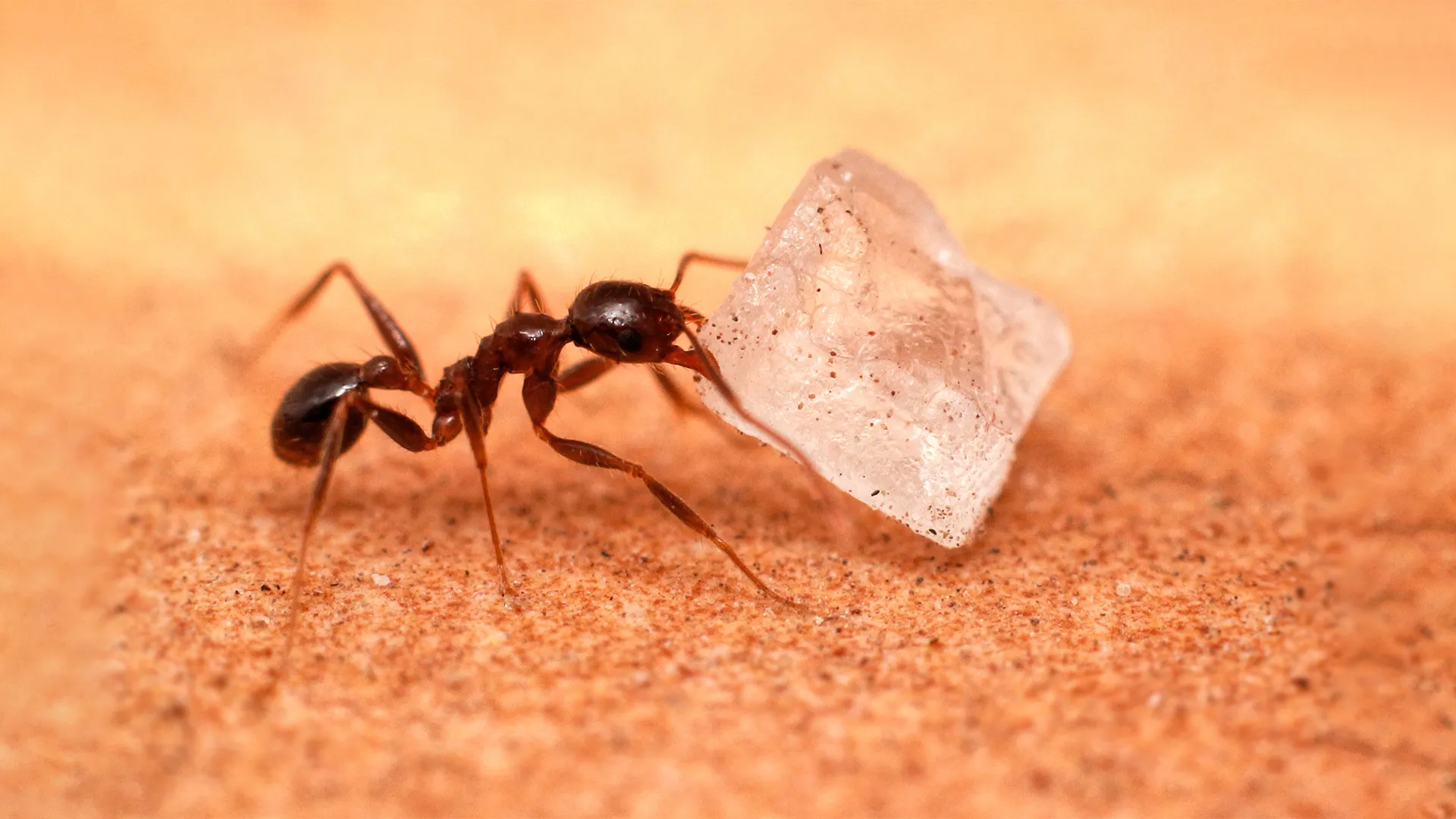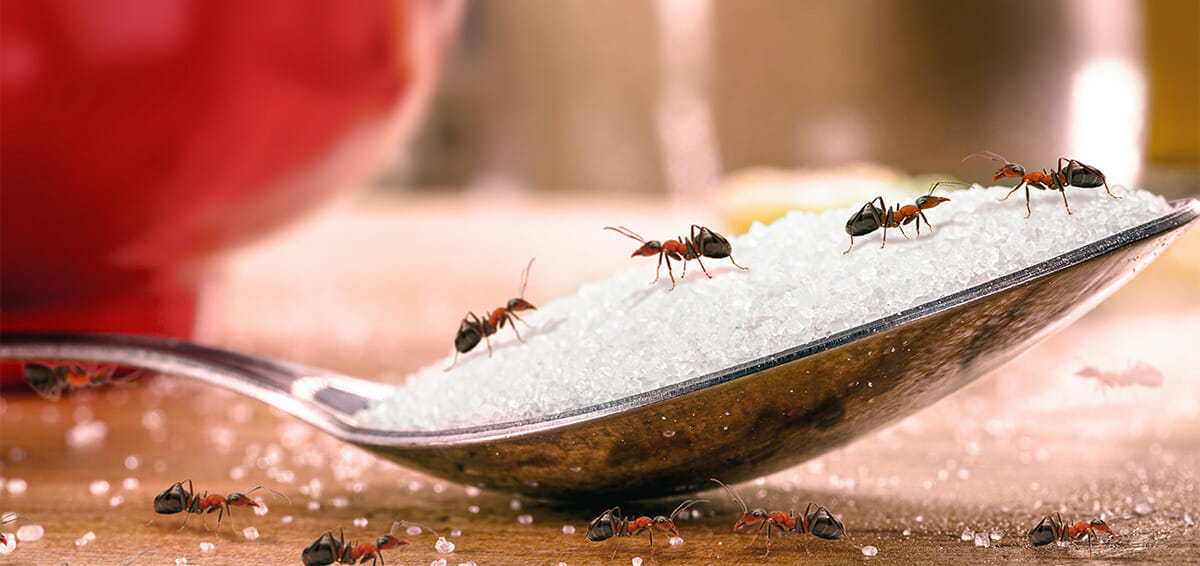Sugar ants are a common problem in many kitchens, but they can be eliminated with a few simple steps. Getting rid of sugar ants can be a challenge, but it doesn’t have to be. With a few simple steps, you can get rid of sugar ants in no time. First, identify where the ants are coming from and try to eliminate the source. Second, clean up any spilled food, crumbs, and other food debris to make sure the area is clean. Third, use an ant bait gel or powder to attract the ants and eliminate them. Finally, use natural repellents like diatomaceous earth or essential oils to keep the ants away. With these steps, you can get rid of sugar ants in your kitchen and keep them away for good.
Identifying Sugar Ants
Sugar ants, also known as pavement ants, are small (1/12–1/8 inch) black or brown insects that can enter your kitchen in search of food. These ants are recognized by their three-segmented bodies and two nodes on the petiole. To identify sugar ants, look for the following characteristics: small size, light- to dark-brown color, two nodes on the petiole, and three-segmented bodies.
Sugar ants are attracted to sweet substances, so they usually enter homes through cracks and crevices and look for sugary food crumbs and spills. The most common way to locate sugar ants is to observe trails of them marching in and out of your kitchen. If you notice any of these signs, it’s time to take action to get rid of the sugar ants.
Understanding Sugar Ants’ Behavior
Have you ever been in the kitchen and noticed tiny sugar ants crawling around? It can be an annoying and frustrating experience. But to get rid of them, it is important to understand the behavior of sugar ants and how they live.
Sugar ants are attracted to sweet and sugary substances, hence their name. This means that they are likely to be found in areas where food is stored, such as cabinets, pantries, and even the refrigerator. These ants also tend to thrive in moist areas, so it is important to keep the kitchen dry and free of any food debris.
Sugar ants also have a social hierarchy and live in colonies. These colonies can contain up to several thousand ants, and the queen ant is the leader of the colony. The queen is responsible for laying eggs and reproducing, and the other ants in the colony are responsible for foraging for food.
To get rid of sugar ants, it is important to eliminate their food source and keep the area dry. Cleaning the kitchen regularly and sealing any cracks or crevices can also help. Additionally, there are various chemical and non-chemical treatments available that can help get rid of the sugar ants. Understanding the behavior of sugar ants is the key to getting rid of them effectively.
Preventing Sugar Ants
Sugar ants can be a nuisance in any home, but they are especially troublesome in the kitchen. Sugar ants, or pavement ants, are attracted to sweets and other sugary items, making your kitchen a prime target for infestation. To effectively keep sugar ants away from your kitchen, it’s important to take preventive measures that reduce the ants’ access to food sources and eliminate their trails.
First off, keep your kitchen clean. Wipe up any spills or crumbs immediately, and regularly sweep and mop the floors. Wash dishes and trash cans regularly. Store food in sealed containers, and make sure all food is sealed away. Bread, cereal, and other food items should be tightly sealed in plastic containers or the refrigerator. Keep pet food in sealed containers and feed them in an area away from the kitchen.
Once you have eliminated the ant’s food sources, it’s time to focus on eliminating their trails. Sugar ants follow each other in trails, and they tend to return to places they’ve been before. To break their trails, use a vinegar and water solution to rinse the kitchen countertops and floors. This will eliminate any ant trails they have already created.
Finally, you can use natural deterrents to keep sugar ants away from your kitchen. Sprinkle ground cinnamon, cayenne pepper, or black pepper around your kitchen counters, or spray a solution of essential oils around the edges of your kitchen. These natural deterrents will help keep sugar ants away from your kitchen and away from your food.
By taking these preventive measures, you can effectively keep sugar ants out of your kitchen and away from your food. Keeping your kitchen clean and using natural deterrents can help you keep your kitchen free from these pesky pests.

Credit: www.terro.com
Eliminating Sugar Ants
Sugar ants are pesky little critters that can wreak havoc in your kitchen. They can invade food stores, contaminate food, and damage surfaces. To get rid of sugar ants in the kitchen, you need a combination of preventive measures and targeted solutions. First, it is important to identify where the ants are coming from and the type of sugar ant you’re dealing with. After that, you can start to eliminate the sugar ants by implementing a variety of home remedies and professional pest control solutions.
To get rid of sugar ants in the kitchen, start by sealing off any potential entry points. Look for small cracks or crevices around windows, doors, and countertops, and use caulk to fill them in. Additionally, clean up any food debris, crumbs, and spills to make sure the ants don’t have any food sources in your kitchen. You can also use natural repellents like vinegar, peppermint oil, or citrus peels to repel sugar ants.
If the sugar ants are still around, it may be time to call a professional pest control company. They can identify the source of the problem and provide targeted solutions to eliminate the sugar ants from your kitchen. They can also provide long-term solutions to prevent future infestations.
Getting rid of sugar ants in your kitchen is not an easy task, but with the right preventive measures and targeted solutions, you can keep your kitchen ant-free.
Cleaning Up After Sugar Ants
Having sugar ants in your kitchen is never fun. Not only can they cause a mess, but they can also spread germs and bacteria. To get rid of sugar ants in your kitchen, you need to take a few steps. First, clean up the mess they’ve left behind. Start by wiping down counters, cupboards, and floors with an antibacterial cleaner. Next, dispose of any food that has been contaminated by the sugar ants. Finally, vacuum the area to get rid of any remaining ants.
Once the mess is cleaned up, you need to figure out how to keep the sugar ants from returning. One effective way is to use ant baits. These baits contain poisons that attract the sugar ants, so they will take them back to their nests and eliminate the entire colony. You can also use boric acid or diatomaceous earth to help keep sugar ants away. Additionally, you can use caulk to seal up any cracks or openings where the sugar ants might be entering your kitchen.
By taking these steps, you can get rid of sugar ants in your kitchen quickly and effectively. Cleaning up after the ants, using ant baits, and sealing up any entry points can help keep them from coming back. With a little bit of effort, you can enjoy a sugar-free kitchen.
Common Sugar Ant Control Products
When it comes to getting rid of sugar ants in the kitchen, one of the most important elements is to use the right products. There are many different products on the market designed to control sugar ants. Some of the most popular include baits, sprays, and dusts. Baits are typically used to draw the ants away from the food sources they are attracted to and to kill them. Sprays are used to create a barrier between the ants and the food sources they are attracted to. Dusts are used to create an environment that is not conducive for the ants to inhabit. Additionally, there are also natural products that can be used to control sugar ants, including boric acid, diatomaceous earth, and citrus oils.
No matter what type of product you decide to use, it is important to make sure that you follow the instructions on the label. Additionally, it is important to use the product consistently and to monitor the area to ensure the ants have been eliminated from the kitchen. With the right product and a little bit of patience, you can easily get rid of sugar ants in the kitchen.
Alternatives to Chemical Control for Sugar Ants
Sugar ants can be a nuisance in the kitchen, but there are ways to rid your home of these pesky pests without using harsh chemicals. While chemical pesticides can be effective, there are also natural alternatives that can help you get rid of sugar ants and keep them away for good. Here are some of the best ways to control sugar ants in the kitchen without the use of chemicals.
First, try to identify the source of the sugar ants. If they are coming from outside, seal up any cracks and crevices around windows and doors to prevent more from coming in. If they are coming from inside, check for sources of food and water, such as crumbs, spilled juice, pet food, and standing water. Once the source is identified, clean up the mess and store food in airtight containers.
Second, use natural deterrents to keep away sugar ants. Sprinkle diatomaceous earth around the perimeter of the kitchen, or use natural oils such as peppermint, tea tree oil, or citrus oil as a barrier to keep the ants away. You can also try baiting them with food, such as a mixture of borax, sugar, and water, and then disposing of the bait in a sealed container.
Finally, use natural predators to control the sugar ant population. If possible, introduce beneficial insects such as green lacewings, ladybugs, or predatory mites into your kitchen. If you do this, be sure to provide them with food and water so they can stay and help control the sugar ant population.
Conclusion
Getting rid of sugar ants in the kitchen can be an annoying and difficult task. However, with the help of preventative measures such as sealing off entry points, removing food sources, and using ant baits, traps, sprays, or dusts, you can effectively and efficiently rid your kitchen of these pesky pests.


